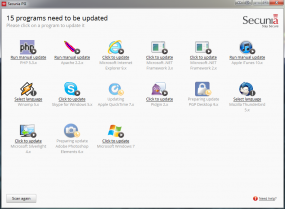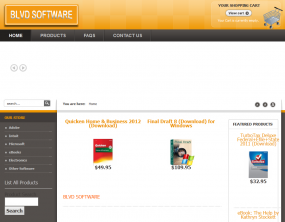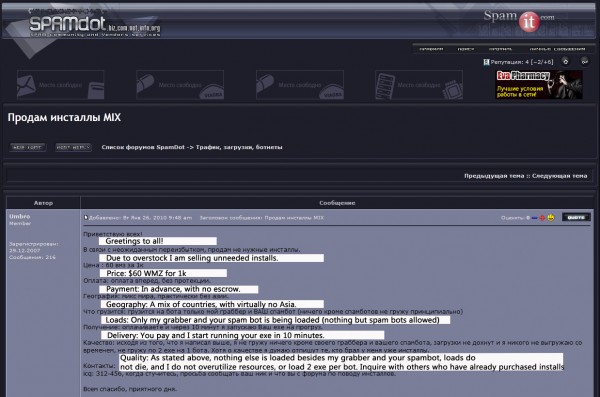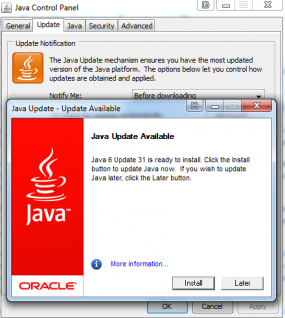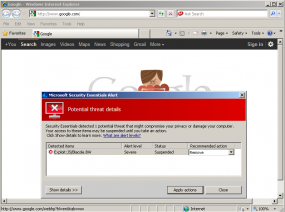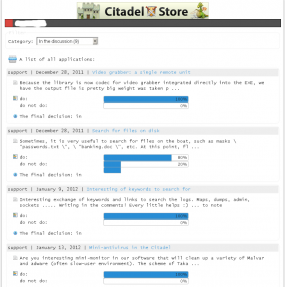Extradition of Accused Masterminds Moves Forward
Millions of computers infected with the stealthy and tenacious DNSChanger Trojan may be spared a planned disconnection from the Internet early next month if a New York court approves a new request by the U.S. government. Meanwhile, six men accused of managing and profiting from the huge collection of hacked PCs are expected to soon be extradited from their native Estonia to face charges in the United States.
 DNSChanger modifies settings on a host PC that tell the computer how to find Web sites on the Internet, hijacking victims’ search results and preventing them from visiting security sites that might help detect and scrub the infections. The Internet servers that were used to control infected PCs were located in the United States, and in coordination with the arrest of the Estonian men in November, a New York district court ordered a private U.S. company to assume control over those servers. The government argued that the arrangement would give ISPs and companies time to identify and scrub infected PCs, systems that would otherwise be disconnected from the Internet if the control servers were shut down. The court agreed, and ordered that the surrogate control servers remain in operation until March 8.
DNSChanger modifies settings on a host PC that tell the computer how to find Web sites on the Internet, hijacking victims’ search results and preventing them from visiting security sites that might help detect and scrub the infections. The Internet servers that were used to control infected PCs were located in the United States, and in coordination with the arrest of the Estonian men in November, a New York district court ordered a private U.S. company to assume control over those servers. The government argued that the arrangement would give ISPs and companies time to identify and scrub infected PCs, systems that would otherwise be disconnected from the Internet if the control servers were shut down. The court agreed, and ordered that the surrogate control servers remain in operation until March 8.
But earlier this month, security firm Internet Identity revealed that the cleanup process was taking a lot longer than expected: The company said more than 3 million systems worldwide — 500,000 in the United States — remain infected with the Trojan, and that at least one instance of the Trojan was still running on computers at 50 percent of Fortune 500 firms and half of all U.S. government agencies. That means that if the current deadline holds, millions of PCs are likely to be cut off from the Web on March 8.
In a Feb. 17 filing with the U.S. District Court for the Southern District of New York, officials with the U.S. Justice Department, the U.S. Attorney for the Southern District of New York, and NASA asked the court to extend the March 8 deadline by more than four months to give ISPs, private companies and the government more time to clean up the mess. The government requested that the surrogate servers be allowed to stay in operation until July 9, 2012. The court has yet to rule on the request, a copy of which is available here (PDF).
Not everyone thinks extending the deadline is the best way to resolve the situation. In fact, security-minded folks seem dead-set against the idea. KrebOnSecurity conducted an unscientific poll earlier this month, asking readers whether they thought the government should give affected users more time to clean up infections from the malware, which can be unusually difficult to remove. Nearly 1,400 readers responded that forcing people to meet the current deadline was the best approach. The overwhelming opinion (~9:1) was against extending the March 8 deadline.

KrebsOnSecurity readers voted almost 9-1 against the idea of extending the Mar. 8 deadline.
In related news, the six Estonian men arrested and accused of building and profiting from the DNSChanger botnet are expected to be extradited to face computer intrusion and conspiracy charges in the United States. Continue reading →




